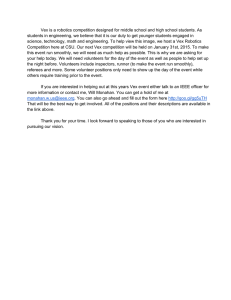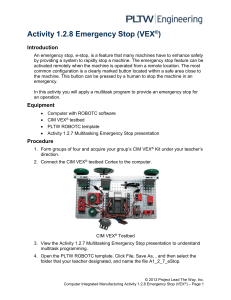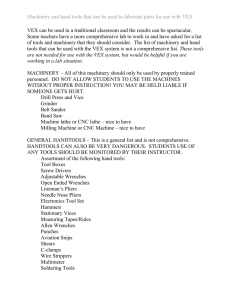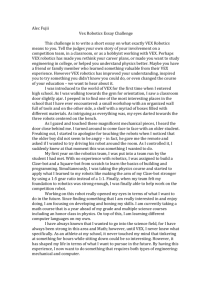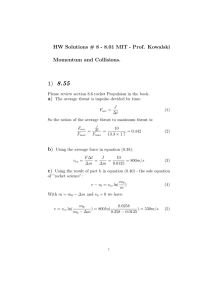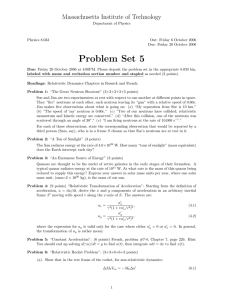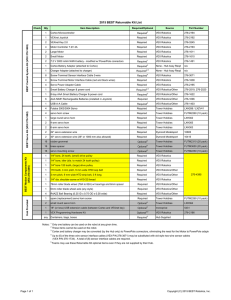Physics 2a, Nov 10, lecture 22 ⋆Reading: chapter 8. v
advertisement
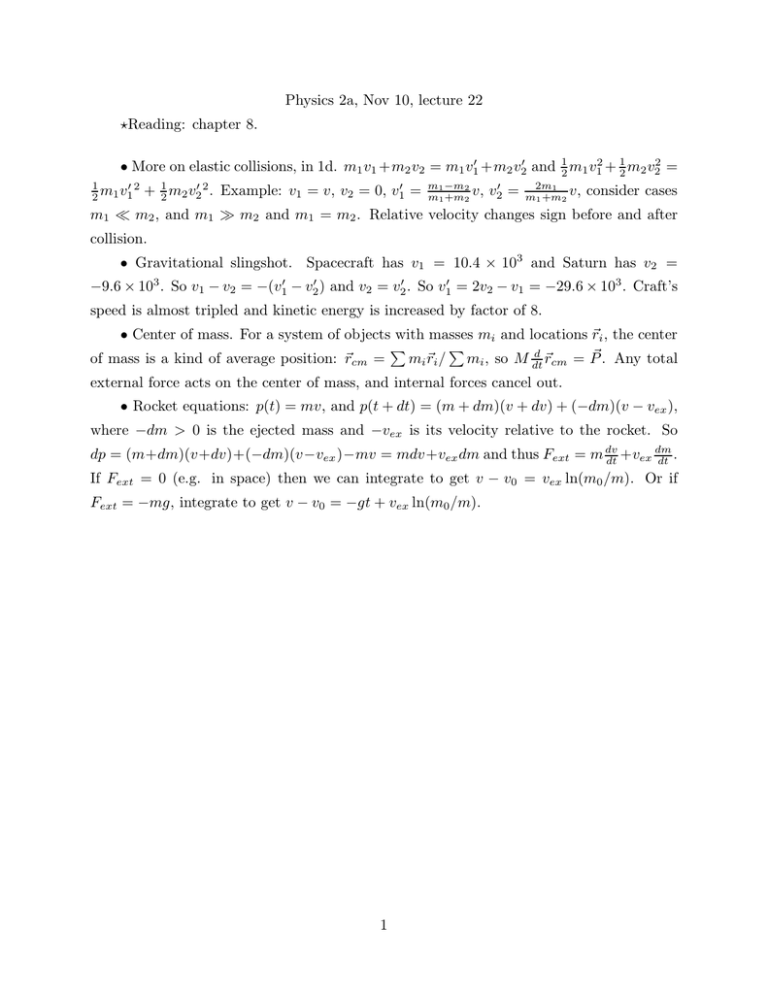
Physics 2a, Nov 10, lecture 22 ⋆Reading: chapter 8. • More on elastic collisions, in 1d. m1 v1 +m2 v2 = m1 v1′ +m2 v2′ and 12 m1 v12 + 12 m2 v22 = 1 m v′ 2 2 1 1 + 21 m2 v2′ 2 . Example: v1 = v, v2 = 0, v1′ = m1 −m2 v, m1 +m2 v2′ = 2m1 v, m1 +m2 consider cases m1 ≪ m2 , and m1 ≫ m2 and m1 = m2 . Relative velocity changes sign before and after collision. • Gravitational slingshot. Spacecraft has v1 = 10.4 × 103 and Saturn has v2 = −9.6 × 103 . So v1 − v2 = −(v1′ − v2′ ) and v2 = v2′ . So v1′ = 2v2 − v1 = −29.6 × 103 . Craft’s speed is almost tripled and kinetic energy is increased by factor of 8. • Center of mass. For a system of objects with masses mi and locations ~ri , the center P P d ~rcm = P~ . Any total of mass is a kind of average position: ~rcm = mi~ri / mi , so M dt external force acts on the center of mass, and internal forces cancel out. • Rocket equations: p(t) = mv, and p(t + dt) = (m + dm)(v + dv) + (−dm)(v − vex ), where −dm > 0 is the ejected mass and −vex is its velocity relative to the rocket. So dm dp = (m+dm)(v+dv)+(−dm)(v−vex )−mv = mdv+vex dm and thus Fext = m dv dt +vex dt . If Fext = 0 (e.g. in space) then we can integrate to get v − v0 = vex ln(m0 /m). Or if Fext = −mg, integrate to get v − v0 = −gt + vex ln(m0 /m). 1
